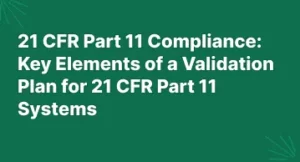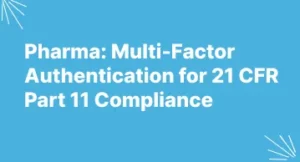Uncovering FDA’s Nitrosamine Impurity Regulations for NDSRIs
Introduction: Overview of NDSRIs and FDA’s Nitrosamine Impurity Regulations
NDSRI stands for Non-selective Dopamine Reuptake Inhibitor and is a type of medication used to treat depression and other mental health conditions. The U.S. Food and Drug Administration (FDA) has established regulations for detecting nitrosamine impurities in these medications. Nitrosamines are substances found in certain food and drugs that can be toxic when consumed at high levels.
The FDA requires all manufacturers of NDSRIs to test their product batches for nitrosamine impurities before they can be sold. The regulations are designed to ensure that the medications do not contain any harmful levels of nitrosamines.
This guide provides an overview of the FDA’s nitrosamine impurity regulations for NDSRIs, how they have evolved over time, and what steps are taken by manufacturers to ensure compliance.
The History of FDA Regulations on NDSRIs
Nitrosamines are impurities found in some drugs used to treat depression and anxiety, called NDSRIs. The U.S. Food and Drug Administration (FDA) has been regulating the safety of NDSRIs since the early 2000s. These regulations are primarily focused on controlling the levels of nitrosamines present in NDSRIs
In 2002, the FDA published a guidance document that required drug companies to perform tests for nitrosamines in NDSRIs. This was the first major regulatory effort regarding nitrosamine impurities in NDSRIs. Since then, the FDA has issued several updates to the original guidance document.
In 2013, the FDA proposed new regulations that would require drug companies to analyze their products for nitrosamines. This was intended to ensure that the levels of nitrosamines in NDSRIs remain within acceptable limits. The FDA also proposed a testing limit of not more than 10 parts per million (ppm).
Since then, the FDA has updated its guidance documents multiple times. In 2018, they issued an advisory warning about the potential health effects of nitrosamine impurities in NDSRIs. This was followed in 2019 by the publication of a new guidance document that set out specific regulations for nitrosamine testing in NDSRIs.
The FDA’s regulations for nitrosamine impurities in NDSRIs are continually evolving. As research continues to progress, more stringent regulations are likely to come into effect. This will ensure the safety and effectiveness of these drugs.
What is a Nitrosamine Impurity?
A nitrosamine impurity is defined as a compound that contains both nitrogen and oxygen molecules. It can occur naturally, but is often formed by the breakdown of nitrogen-containing compounds. In some cases, nitrosamine impurities can form from industrial processes that use nitrous acid and nitrite salts. Nitrosamines are also known to form when certain organic compounds are heated or burned.
When present in drugs, nitrosamine impurities have the potential to cause harm to humans by damaging cells and causing cancer. Unfortunately, nitrosamines are difficult to detect in small amounts and can sometimes be found in drugs that have not been properly tested. For this reason, the US Food and Drug Administration (FDA) has implemented regulations that require manufacturers to test for and control nitrosamine impurities in drugs.
In particular, the FDA has regulations in place for NDSRIs (newly developed active substances) which must have their nitrosamine impurities closely monitored by the manufacturer. Any drugs found to contain higher levels of nitrosamine impurities than allowed by the FDA regulations must be recalled from the market and cannot be used until the impurity is reduced to an acceptable level.
International Regulators and NDSRI Impurities
Different countries have different regulations when it comes to NDSRIs and nitrosamine impurities. These regulations vary in terms of how strict they are and what kinds of products are affected. For example, in the European Union, NDSRIs must meet strict standards for nitrosamine impurities while in Japan, all NDSRIs are subject to a limit on nitrosamine impurities. In the United States, the FDA sets limits for nitrosamine impurities in certain classes of NDSRIs, but these limits are not always as stringent as those of other countries.
The differences in regulatory standards between countries means that manufacturers must take extra care when producing NDSRIs for global markets. This is especially true for companies who wish to export their products to countries with stricter nitrosamine impurity standards, such as the EU or Japan. Manufacturers must not only meet the local regulations, but also any additional requirements imposed by their destination country.
It is important to note that some countries may not have specific regulations for NDSRI impurities, or may have less stringent standards than other countries. In these cases, manufacturers must take extra precaution to ensure that their products meet international standards, or else they may face legal repercussions.
Are All NDSRIs Affected by the Same Regulations?
A New Drug Substance, Raw Material – or NDSRI – refers to an active pharmaceutical ingredient used to make medicines. NDSRIs are regulated by the Food and Drug Administration (FDA), with standards limiting the levels of nitrosamine impurities in NDSRIs.
However, not all NDSRIs are affected equally by these regulations. Different types of NDSRIs require different levels of regulation depending on their uses, dosage forms, and chemical compositions.
For example, NDSRIs that are more likely to be converted into nitrosamines in the body, such as those found in oral formulations, will be subject to stricter regulation than other NDSRIs.
NDSRIs used to produce injectables, ointments, topical solutions, and other non-oral medications are less likely to be affected by FDA nitrosamine impurity regulations. The FDA has also implemented specific requirements for certain categories of drugs, such as cytotoxic drugs and heparin.
In general, nitrosamine impurity regulations apply to NDSRIs that are used for human or veterinary use and intended to be administered orally. However, each individual NDSRI must be evaluated to determine if it is covered under FDA regulations.
Controlling for NDSRI Impurities
Nitrosamine impurities present a serious health risk, and it’s important to take steps to prevent them in NDSRIs. There are several ways to limit the presence of nitrosamine impurities.
- Manufacturers must use raw materials with low levels of nitrosamines.
- The manufacturing process must be controlled to reduce the formation of nitrosamines.
- Testing must be done on each batch of finished product to confirm nitrosamine levels.
These measures can help protect consumers from any health risks associated with nitrosamine impurities in NDSRIs.
Conclusion
In conclusion, this guide discussed the FDA’s nitrosamine impurity regulations for NDSRIs and the potential effects of these impurities. We explored the history of these regulations, the international regulators and global approaches to NDSRI impurity control. Additionally, we examined the types of NDSRIs which are affected by these regulations.
Ultimately, these regulations are important for protecting public health and ensuring that medications are safe and effective for their intended purpose. It is imperative that manufacturers adhere to the standards set out by the Food and Drug Administration for the safety of consumers everywhere.
Answers to Your Questions About FDA’s Nitrosamine Impurity Regulations for NDSRIs
1. What are Nitrosamines?
Nitrosamines are carcinogenic compounds formed in some pharmaceutical products when they come into contact with nitrite-containing compounds. They can cause serious health risks if present in high levels.
2. What is NDSRI?
NDSRI stands for Non-dried Single-Rise Inactive Ingredient, and it is one of the materials used to make drug products.
3. How does FDA regulate Nitrosamine Impurity?
The FDA imposes limits on the impurities present in NDSRI that can lead to the formation of Nitrosamines. Companies must be aware of the levels set by the FDA and test their products to ensure they do not exceed these limits.
4. What kind of companies are affected by this regulation?
Any company that manufactures or uses NDSRI as an inactive ingredient in drug products must comply with the regulations set by the FDA.
5. What are the consequences of not complying with FDA’s Nitrosamine Impurity Regulations?
Failure to comply could result in product recalls, civil penalties, and fines.
6. Are there any precautions companies can take to ensure compliance?
Yes, they can take appropriate action to avoid contamination by using the right manufacturing processes, proper storage, and testing products to ensure the levels of Nitrosamine residuals remain within prescribed limits.
7. How often should companies test their products for Impurities?
Regular testing is necessary to ensure their products remain compliant with the FDA regulations. FDA recommends frequent testing at regular intervals throughout the entire manufacturing process.







